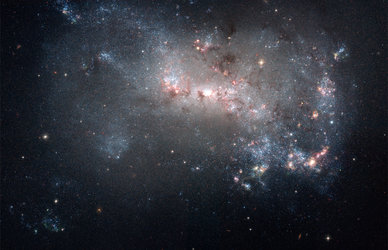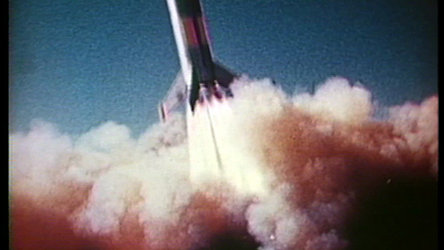
Next Generation Space Telescope (NGST)
Within the next decade ESA and NASA will launch NGST, the Next Generation Space Telescope. Unlike the Hubble Space Telescope which has been providing images of the Universe for the past 12 years, the NGST will focus on the infrared part of the electromagnetic spectrum. This is due to the fact that there are gaps in the knowledge about the early phases of the universe which are hoped to be filled by NGST observing light at this end of the spectrum. This video provides an overview of the NGST complete with graphic animations and explanations on how NGST will help to answer questions about the orgin of the Universe. The 5-minute A-roll contains split audio with an English guide track and is complemented by a B-roll with international sound only. The video contains:
0:32-1:51 Background: The Hubble Space Telescope, what is has discovered, and the limits.
1:51-2:06 Bob Fosbury, ESA Space Telescope Scientist, explains the challenge of observations into faint objects in the infrared area
2:06-2:29 Introduction to the joint ESA/NASA Next Generation Space Telescope (NGST) which will be designed for observation from the visible to the mid-infrared spectra
2:29-2:59 Problems for observing objects in the infrared spectrum and why the NGST will be placed further away from Earth than the Hubble Space Telescope. The target location is 1.5 million km from the Earth. This location will also be extremely cool
2:59-3:22 Bob Fosbury, ESA Space Telescope Scientist, explains that one of the requirements to observe in the infrared spectrum is that it must be extremely cool
3:22-4:00 NGST will carry a permanent shield, of the size of a tennis court, casting a permanent shadow over the telescope allowing highly sensitive detectors to function probably all the time. The shield will provide solar panels to generate electricity and a communication system pointed towards Earth all the time. The weight of NGST will only be a quarter of that of the Hubble Space Telescope, yet its light collecting power will be ten times greater.
4:00-4:16 Discussion of what NGST will be able to observe.
4:16-4:45 Bob Fosbury, ESA Space Telescope Scientist, explains that NGST is planned to take over from Hubble. There will be an enormous amount of development work to be done for NGST.
4:45-5:29 After launch, NGST will also have another mission in addition to the one studying far away galaxies. It will also study Dark Matters and help to better understand the future of our universe.






